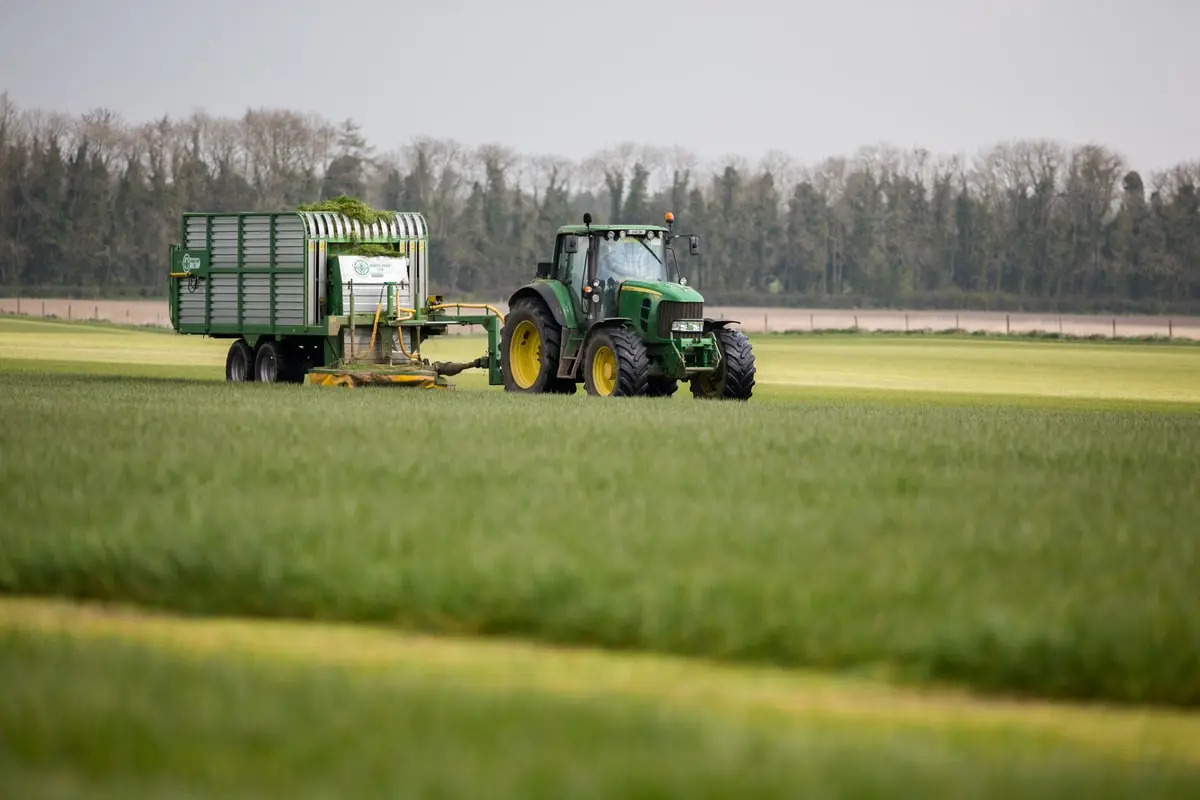1. Rotational grazing systems
This system allows livestock to graze smaller fields or paddocks one by one. The paddock is generally grazed for 1-3 days and then rested for about three weeks The rest period promotes grass regrowth for subsequent grazings. By allowing the plants time to renew their energy reserves and rebuild plant vigour, rotational grazing ensures plants remain healthy and productive for the long term.
Good grazing infrastructure is needed but will ensure you are less vulnerable to changing weather conditions. Management of grazing platforms will become easier, and the grazing season will be extended. When planning, consider the stocking rate on your farm and what goals you want to achieve.
2. Zero grazing
Ideal for dairy farming, and often used at the shoulders of the season to maintain grass in the diet; with zero grazing, fresh grass is cut and brought to housed cattle. This allows farmers with inaccessible land to still feed cows with fresh homegrown forage.

Zero grazing advantages include increased grass utilisation as cattle can’t selectively graze within a sward and grass residuals are kept consistent throughout the season. This can be attractive for wetter farms as poaching is not a risk.
However, it might not be suitable for all systems, as high machinery and fuel costs are involved. It is also a labour-intensive approach and cut-grass spoils quickly, needing to be consumed within 12-18 hours.
3. Continuous grazing
In a continuous grazing system, livestock have unrestricted access to the grazing area throughout the season. Also known as set stocking, continuous grazing encourages selective grazing and may lead to overgrazing of the targeted areas which promotes the growth of grassland weeds.
With specific areas targeted, your grassland will not be grazed efficiently and forage utilisation levels will decline. This can result in large areas of wasted grass that turn stemmy and unpalatable leading to reduced dry matter digestibility.
4. Strip grazing
This is generally used in rotational grazing systems at the shoulders of the year to increase utilisation and reduce wastage, especially when the weather is wet. Due to the weather conditions when strip grazing is applied, it is often almost impossible to avoid poaching or to maximise wastage. As a result, if the weather is very challenging, some farmers will practice on/off grazing to try to increase utilisation.

Generally used in dairy systems to give cows a fresh allocation of grass after each milking, strip grazing uses a moveable electric fence to provide leafy forage for a short period of time before moving the fence forward to a new area. Back-fencing ensures that the previously grazed area is given sufficient time to recover.
5. Block grazing
A block grazing system is cost-effective and similar to rotational grazing, with areas divided into grazing blocks for seven to eight days. It involves one drinker being placed in the grazing area where the grazing blocks meet and is mostly used beef and sheep grazing.
It is not a labour-intensive system when compared to strip grazing as less fencing is required and there is less movement of animals. However, efficiency and grass utilisation can suffer when adopting this approach as poaching is a disadvantage of block grazing due to high livestock activity beside the water supply.
6. Creep feeding
With creep feeding, this involves young animals having access to the highest quality of forage by placing a creep gate in a pasture. The gate is only large enough for a lamb or calf to fit through.
By creep feeding lambs on pasture along with calves, younger animals can supplement their mother’s milk with highly nutritious feed.
7. Leader-follower grazing
A leader-follower grazing system involves younger stock accessing a paddock, strip or block before adult livestock. The key differences between a leader-follower system and a creep feeding one are that a leader-follower system requires labour to ensure effective application of the method and that young animals are fully weaned.
This grazing system can also be used when stocking two different species. Prioritising stock works well as the leader because sheep graze tighter than cattle.
Ask us about grazing systems
Want advice on grazing systems? Simply contact our experts.
